Bullish indicating open at $55-$60, IPO prices at $37
Introduction & Market Context
AST SpaceMobile (NASDAQ:ASTS) presented its second quarter 2025 business update on August 11, highlighting progress toward launching the world’s first space-based cellular broadband network. The company’s stock closed at $46.63, down 1.52% for the day, with aftermarket trading showing an additional 0.75% decline to $46.28.
The presentation comes amid significant market volatility for ASTS shares, which have delivered extraordinary returns over the past year but continue to experience price fluctuations as investors weigh the company’s ambitious technological promises against its capital-intensive deployment strategy.
Quarterly Performance Highlights
AST SpaceMobile’s Q2 2025 presentation emphasized operational progress rather than financial results, with the company maintaining focus on its satellite deployment timeline and commercialization efforts.
The company reported adjusted operating expenses of $51.7 million for Q2 2025, up from $44.9 million in Q1. Capital expenditures surged to $322.8 million in the second quarter, compared to $124.1 million in Q1, reflecting intensified investment in satellite production and infrastructure.
As shown in the following chart of quarterly financial metrics:

Notably, AST SpaceMobile’s liquidity position strengthened to $939.4 million as of June 30, 2025, with pro forma cash, cash equivalents, and restricted cash exceeding $1.5 billion when accounting for convertible notes offering and sales under the now-terminated ATM facility. This substantial war chest provides runway for the company’s ambitious deployment plans.
Satellite Deployment Strategy
AST SpaceMobile outlined an accelerated timeline for its Block 2 BlueBird satellite deployment, targeting nationwide intermittent service in the United States by the end of 2025, followed by expansion to the United Kingdom (TADAWUL:4280), Japan, and Canada in Q1 2026.
The company’s deployment strategy is visualized in this rollout map:
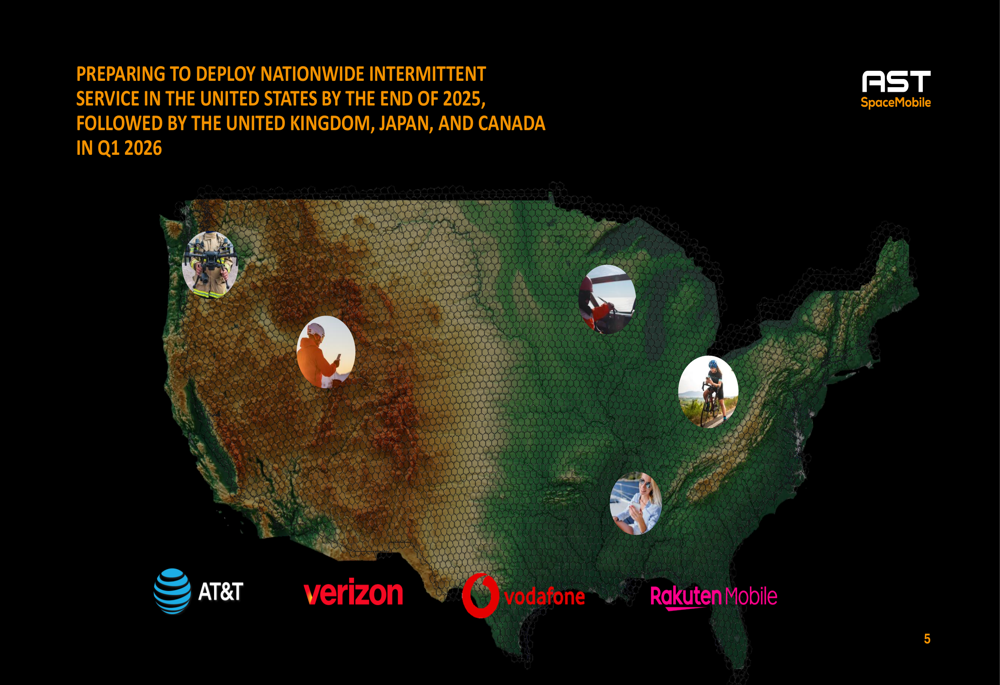
Manufacturing progress remains a critical focus, with AST SpaceMobile reporting completion of micron assembly for phased arrays of eight Block 2 BlueBird satellites. The company expects to complete assembly of 40 satellites equivalent of microns by early 2026, with its first satellite (FM1) ready to ship in August 2025.
The following images showcase the company’s manufacturing progress:
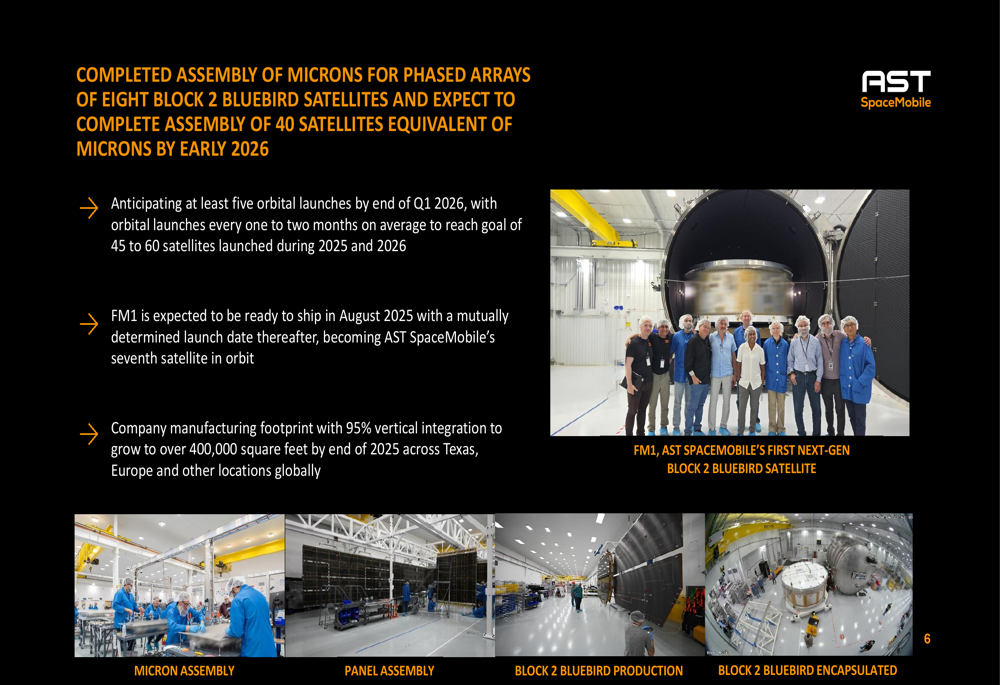
AST SpaceMobile anticipates at least five orbital launches by the end of Q1 2026, with launches occurring approximately every one to two months to reach a goal of 45-60 satellites deployed during 2025 and 2026. The company’s manufacturing footprint, currently 95% vertically integrated, is expected to expand to over 400,000 square feet by the end of 2025 across facilities in Texas, Europe, and other global locations.
The detailed deployment timeline is illustrated below:
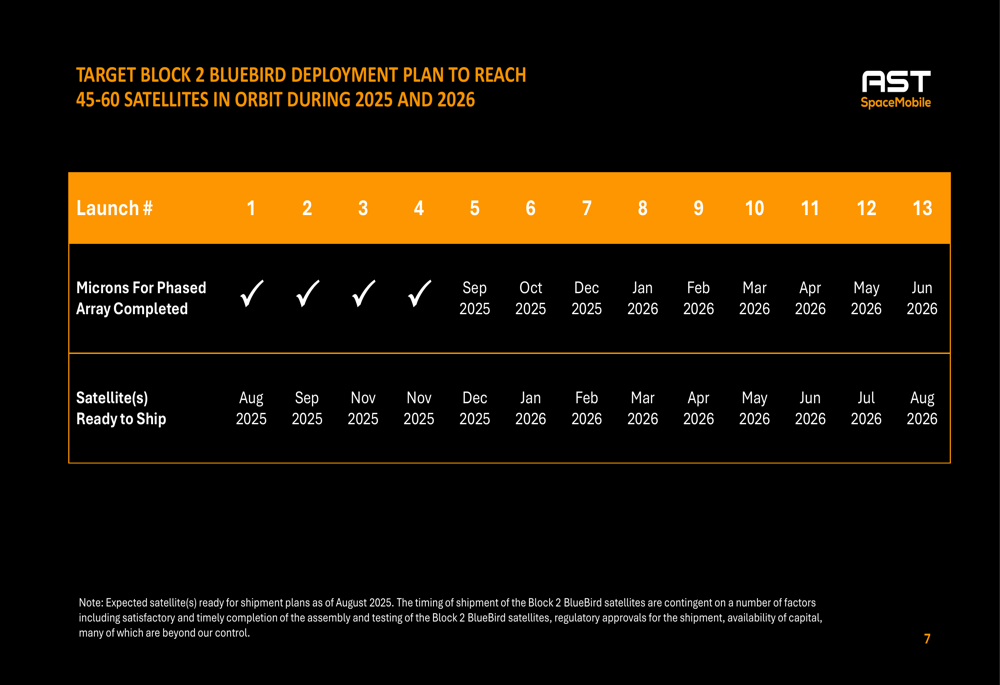
Spectrum Strategy and Commercial Partnerships
A significant development highlighted in the presentation is AST SpaceMobile’s expanded spectrum strategy, which now includes an agreement to acquire 60 MHz of global S-Band spectrum priority rights. This complements the company’s existing 3GPP cellular and L-Band strategies, potentially enabling peak data rates of up to 120 Mbps per cell.
The company’s spectrum approach is visualized here:
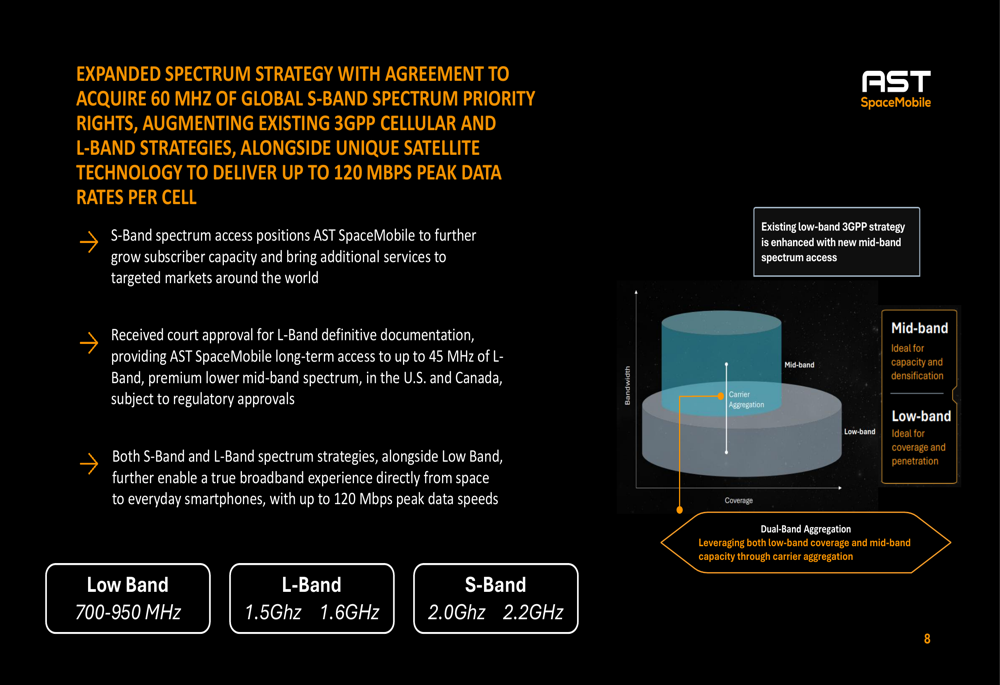
AST SpaceMobile also reported receiving court approval for L-Band definitive documentation, providing long-term access to up to 45 MHz of L-Band spectrum in the U.S. and Canada, subject to regulatory approvals.
On the commercial front, the company continues to expand its partnerships with mobile network operators (MNOs). AST SpaceMobile now has agreements with more than 50 MNOs globally, representing nearly 3.0 billion existing subscribers. The company highlighted a new partnership with Vi to expand space-based mobile connectivity in India and noted interest from network operators in 21 of 27 EU member states.
The global reach of these partnerships is illustrated in this map:
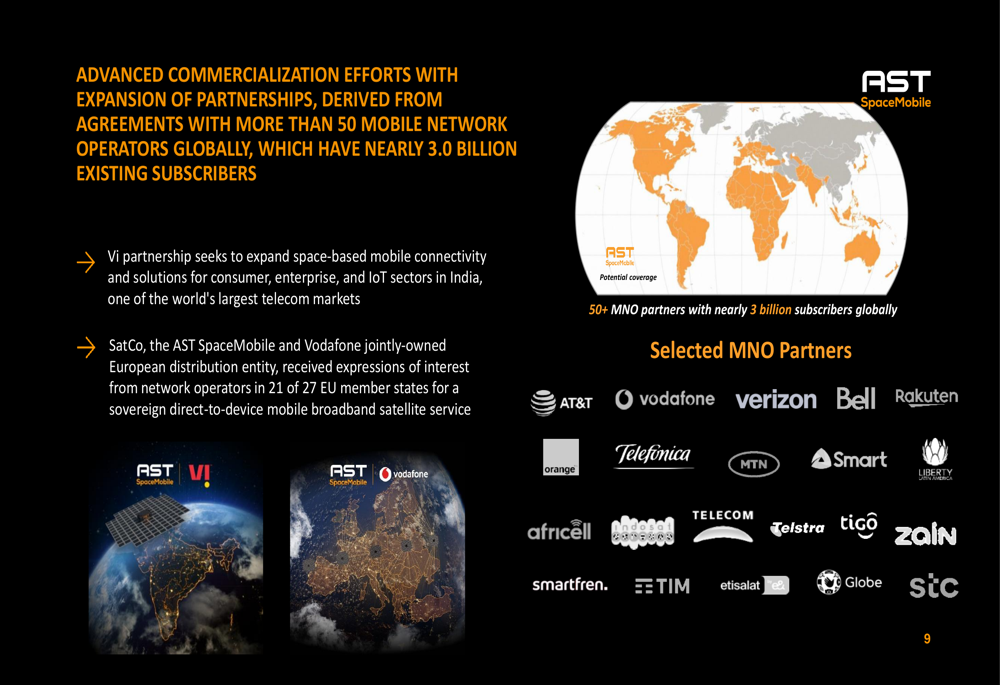
The company is also making inroads with government contracts, demonstrating the first tactical non-terrestrial network connectivity over standard mobile devices and signing two additional early-stage contracts with the U.S. Government, bringing the total to eight contracts to date.
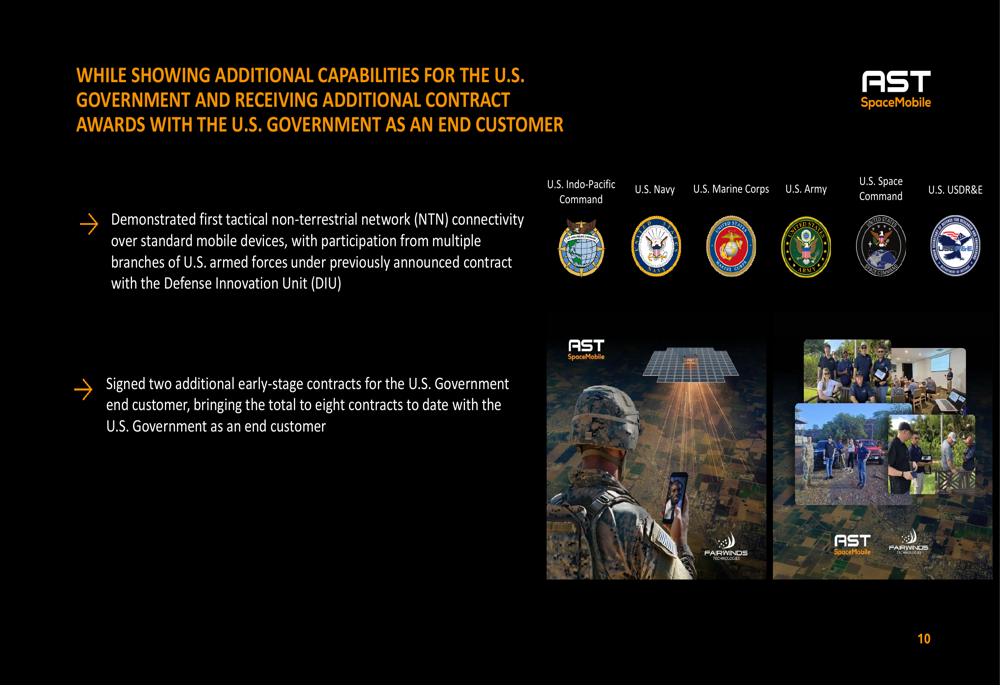
Financial Position and Outlook
AST SpaceMobile’s financial strategy appears focused on balancing aggressive capital deployment with maintaining adequate liquidity. The dramatic increase in capital expenditures from Q1 to Q2 2025 ($124.1M to $322.8M) reflects the company’s acceleration toward commercial service launch.
While the Q2 presentation did not provide specific revenue guidance, the company’s Q1 earnings call had projected 2025 revenue between $50 million and $75 million, with significant revenue generation expected in the second half of the year. The planned commercial service launch in early 2026 remains the critical inflection point for revenue growth.
The company’s adjusted operating expenses increased to $51.7 million in Q2 2025 from $44.9 million in Q1, though management noted the Q2 figure would be approximately $46.5 million when adjusted for certain factors. This controlled expense growth, coupled with the strengthened balance sheet position, suggests AST SpaceMobile is managing its burn rate while investing heavily in infrastructure.
With over $1.5 billion in pro forma cash and equivalents, the company appears well-positioned to fund its ambitious deployment schedule through the critical nationwide service launch phase. However, investors should note that the capital-intensive nature of satellite deployment will likely continue to pressure cash reserves until commercial service generates meaningful revenue.
As AST SpaceMobile transitions from development to deployment and initial service launch, the coming quarters will be crucial in determining whether the company can execute on its ambitious timeline while managing its significant cash burn rate.
Full presentation:
This article was generated with the support of AI and reviewed by an editor. For more information see our T&C.
